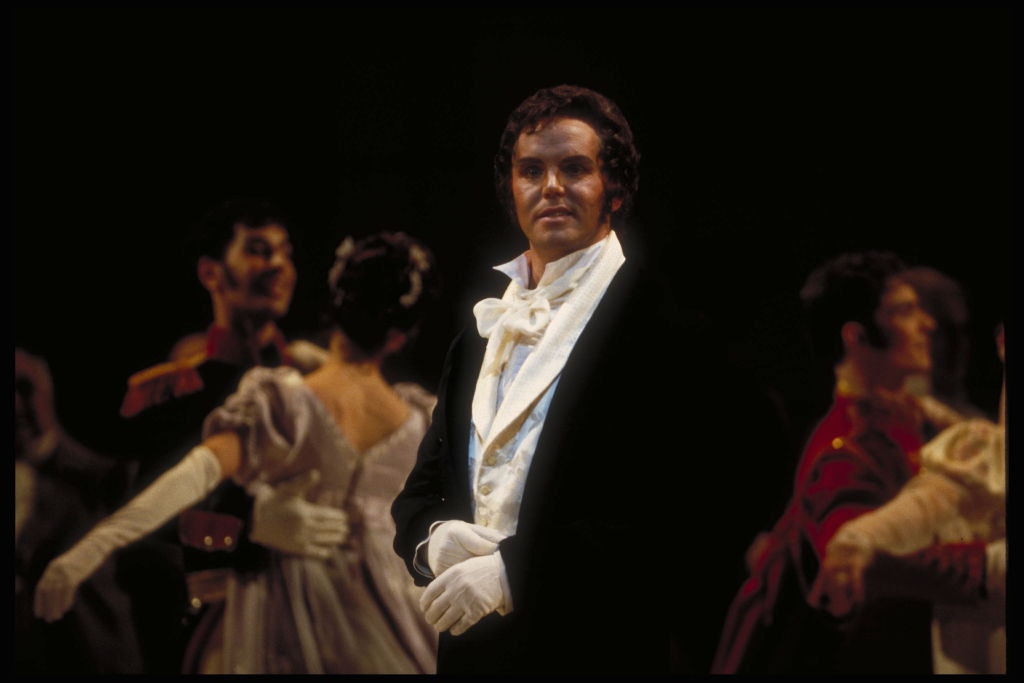The Pan Book of Horror Stories: top-drawer gore
Their lurid covers were catnip to bloodthirsty, impressionable teenagers
This article is taken from the December-January 2024 issue of The Critic. To get the full magazine why not subscribe? Right now we’re offering five issues for just £10.
Herbert van Thal. A name to conjure with. Were he a fictional character in a pulp shocker, he might be a wealthy socialite accused of murdering his wife or the sole occupant of a crumbling pile in the Carpathian mountains — or perhaps a sinister Mitteleuropean nobleman with a predilection for cruel and unusual punishment.
In fact, real-life Herbert van Thal, Bertie to his chums, was a respectable Hampstead-born book-man and for decades his name was emblazoned on the covers of The Pan Book of Horror Stories, which he edited.
This best-selling paperback anthology series ran to 30 volumes over 30 years and is fondly remembered as the gateway to an appreciation of the macabre for countless readers, including many who went on to become authors, including Sarah Waters, Clive Barker and Muriel Gray.
Van Thal himself recognised that his name set him apart in Britain and, for a time, disliked it. In his plodding 1971 autobiography The Tops of the Mulberry Trees, he wrote: “From an early age, I considered that I should have been born Cardinal Archbishop of Mayence, the Emperor of Austria, or even a German princeling of the eighteenth century. I have always liked the names they bore … Now I am perfectly content with the name with which I was born.”
As well as a spell with the film production company that made Alfred Hitchcock’s Jamaica Inn and his experiences as a juror at the trial of the serial killer John Christie, the memoir details his various jobs in publishing. With his friends Margaret Douglas-Home and Gwilym Fielden Hughes, he founded the short-lived publishing house of Home & van Thal which reprinted Mrs J. H. Riddell’s Weird Stories in 1946 and Rhoda Broughton’s Twilight Tales in 1947. Their success was possibly why, in 1957, Pan decided to publish an anthology of horror stories and turned to Van Thal to edit it.
The Pan Book of Horror Stories was published in December 1959. Just 3’6 bought you, according to the blurb on the back, “stories of subtle beastliness … of sickening horror … of utter chilling terror”. In an introductory note, Van Thal wrote: “We feel that the stories in this book are such that if your nerves are not of the strongest, then it is wise to read them in daylight lest you should suffer nightmares, for these authors know their craft, and they have not hesitated to expound it with little thought of sparing you from the horrifying details.”
These bold claims were somewhat undermined by the first story, “Jugged Hare”, a fairly mild offering about an unfaithful wife from The Wolves of Willoughby Chase author Joan Aiken. Van Thal had decided, possibly unwisely, that the stories should appear in alphabetical order of their authors. Though deftly written, Aiken’s effort seemed unlikely to cause anyone to “suffer nightmares” and was disappointingly devoid of “horrifying details”.
In fact, the anthology didn’t really get out of first gear until the fourth story, “The Copper Bowl”, a yarn by George Fielding Eliot about a fiendish “mandarin” inventively torturing a young woman in order to elicit information from her beau. With a gamey depiction of its oriental villain that we would now describe as “of its time”, “The Copper Bowl” gave a sense that we were picking up speed. And when we reached Angus Wilson’s memorably disturbing “Raspberry Jam”, about a pair of grotesque, drunken old ladies, we were really motoring.
The book shifted more than 600,000 copies
The book shifted more than 600,000 copies, quite sufficient to justify a second volume, after which publication became more or less an annual event. The first few books in the series contained mostly reprints of stories by known authors. Volume one had tales by, among others, C.S. Forester, L.P. Hartley, Nigel Kneale, Muriel Spark and Bram Stoker. The second featured H.G. Wells, Agatha Christie and Edgar Allen Poe, the third Algernon Blackwood, Lord Dunsany and William Faulkner.
However Van Thal realised they would quickly run out of material and started commissioning original work. The subsequently prolific author Basil Copper, for example, made his debut in The Fifth Pan Book of Horror Stories with “The Spider”, for which he was paid a tenner. Actress Dulcie Gray, star of The Franchise Affair and Howard’s Way, was another contributor, sometimes under a nom de plume.
An important element in the series’ success was the books’ eye-catchingly lurid covers
An important element in the series’ success was the books’ eye-catchingly lurid covers, which made them catnip to impressionable, bloodthirsty teenagers. Some were photographs — a severed head in a hatbox, a hand with an eyeball embedded in the palm thrusting out of the soil.
Others were paintings by artists such as Alan Lee, who produced the covers for volumes 16 and 17 and would go on to work as joint lead concept artist for Peter Jackson’s Lord of the Rings films. Josh Kirby, who worked on Terry Pratchett’s Discworld novels, did the covers of the thirteenth and fourteenth books.
Van Thal edited 25 volumes of Horror Stories — number 22 included a story called “Pornography” by an up-and-coming young talent called Ian McEwan. A further five appeared after his death in 1983. However, sales were plunging dramatically and the 30th and final volume, published in 1989, shifted fewer than 7,000 copies. The reign of terror was over.
Johnny Mains, editor, Pan Horror expert and Herbert van Thal’s biographer, attributes its demise to a number of factors. “Horror in the 1980s was expanding,” he says. “The themes and stories were bigger and grander and weren’t able to be contained under the constraints of an anthology. The novels were getting fatter and more out of control: you were getting more value for money, so why would you want to read slim anthologies where you sometimes barely got a story, let alone character development?
“The money put into horror authors to try to find the next Stephen King or James Herbert meant that anthologies, in the main, were seen as a secondary string to the bow, when in the 1960s and 1970s, you couldn’t move under the weight of them.”
In addition, there was an increasing reliance on what we would now call torture porn. Mains, who wrote the introduction to a successful 2010 reissue of the first volume, believes sadistic stories such as Alan Temperley’s “Kowlongo Plaything”, about a depraved Idi Amin-ish dictator which appeared in Volume 23, should never have been published.
One also wonders what Van Thal really thought of the monster he had created. There’s little mention of horror in his autobiography. The “by the same author” list at the front of the book does not include the Pan anthologies. Yet its legacy is undeniable.
Mains suggests it was an influence on the once fashionable horror anthology films such as Dr Terror’s House of Horror. Muriel Gray has spoken of her affection for them whilst Sarah Waters, award-winning author of Fingersmith and The Little Stranger, says she was “obsessed” by them as a child.
The playwright Anita Sullivan adapted five of the second book’s best stories for Radio 4 and they were broadcast over Halloween 2018. The later less successful and therefore less readily available volumes are sought after by collectors eager to acquire the full set. The Pan Book of Horror Stories might be dead and buried but it is interred in an unquiet grave.
Enjoying The Critic online? It's even better in print
Try five issues of Britain’s most civilised magazine for £10
Subscribe














